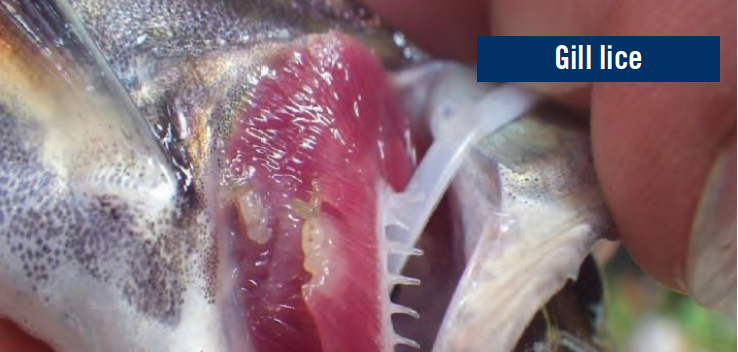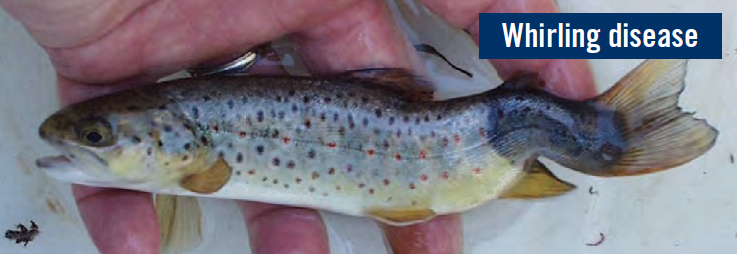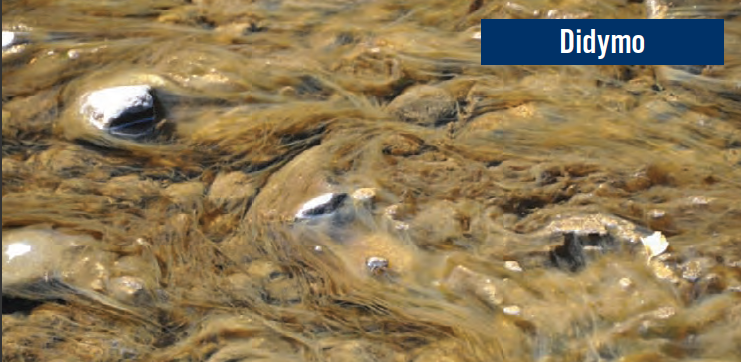Aquatic Nuisance Species
Aquatic nuisance species are organisms that can cause ecological and/or economic harm when moved outside their historical range. In the mountain region, whirling disease and gill lice are aquatic nuisance species most troubling to biologists right now because of their potential impacts on trout populations.
GILL LICE attach to a fish’s gills where they cause damage and inhibit the fish’s ability to breath. While most fish are able to tolerate a moderate infestation of gill lice, some fish, particularly those that are suffering from other stressors like drought or high water temperatures, can succumb to a gill lice infestation.
WHIRLING DISEASE affects fish in the trout and salmon family. Whirling disease damages cartilage and skeletal tissue in a fish, causing it to swim in a whirling motion. While often fatal to juvenile fish, the disease does not infect humans or pets, and eating an infected fish is not known to cause any harmful effects.
DIDYMO (“rock snot”) is a non-native invasive microscopic algae that can produce large amounts of material to form thick brown mats on stream bottoms. Didymo threatens aquatic habitat, biodiversity and recreational opportunities. Didymo can be spread by anglers, kayakers, canoeists, tubers, boaters and others engaging in water-based activities. It can cling unseen to waders, boots, boats, clothing, lures, hooks, fishing line and other equipment and remains viable for several weeks even in seemingly dry conditions. There are currently no known methods for controlling or eradicating didymo once it infests a water body.
To reduce the risk of introducing harmful and invasive species, anglers fishing for trout in any waters in western North Carolina should be especially diligent when cleaning fishing equipment and handling fish.
YOU CAN HELP PREVENT THE SPREAD OF AQUATIC NUISANCE SPECIES:
CLEAN your gear by removing all aquatic plants, animals and mud, debris and vegetation from anything that’s come into contact with water. A soft bristle brush is useful for scrubbing cracks, crevasses, seams and laces. Back home, mix up a 10% solution of 1 part chlorine bleach to 9 parts water and soak or scrub all of your gear.
DRAIN all water from your boat, live wells, trailer and all other gear that’s been in contact with water BEFORE leaving the stream.
DRY all equipment thoroughly. If possible, allow for at least 5 days of drying time before entering other waters.
NEVER MOVE fish or other aquatic life from one body of water to another, and remember that individuals need to obtain a permit from the N.C. Wildlife Resources Commission prior to stocking fish.
I think I fish, in part, because it's an anti-social, bohemian business that, when gone about properly, puts you forever outside the mainstream culture without actually landing you in an institution.




